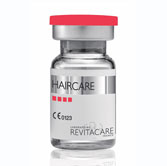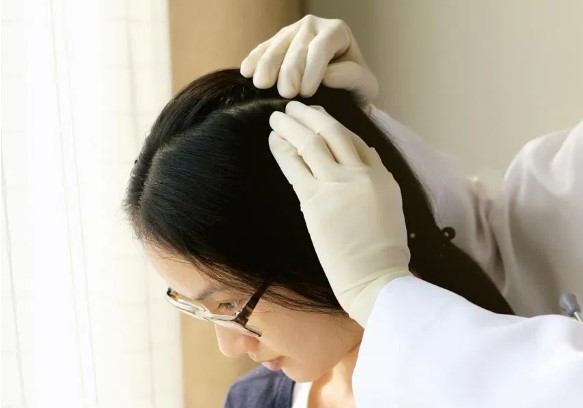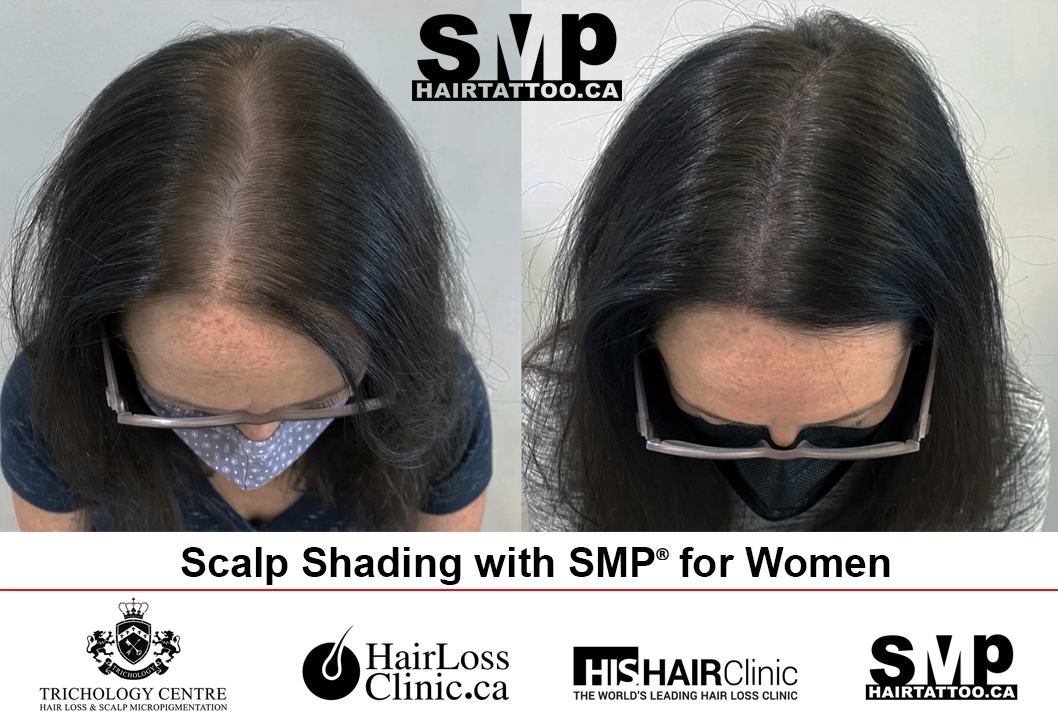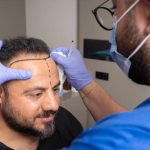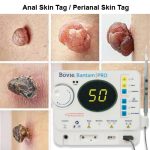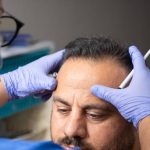Table of Contents
Hair Loss Women: Causes and Treatment Options
Millions of women around the globe are commonly afflicted by the issue of hair loss. Losing hair can be a stressful and frustrating experience, but understanding the causes of female pattern hair loss and the available treatment options can help women feel more in control of their hair loss and ultimately regain their confidence.
People lose hair every day as part of the natural hair growth cycle. Hair grows from hair follicles, tiny openings in the skin that produce hair. As hair grows, it passes through three stages:
- The anagen phase (growth phase)
- The catagen phase (transitional phase)
- The telogen phase (resting phase)
During the telogen phase, the hair follicle sheds the hair and prepares to produce new hair.
Women’s most prevalent form of hair loss is female pattern hair loss, also referred to as androgenetic alopecia. It is caused by genetics and hormones and typically results in thinning hair on the top and sides of the scalp. Female hair loss differs from male pattern baldness, typically resulting in a receding hairline and balding crown.
Several treatments are available for hair loss, including minoxidil (Rogaine), a topical solution that treats hair loss by increasing blood flow to the hair follicles. Minoxidil is the only hair loss treatment approved by the Food and Drug Administration (FDA) for use in women. Other treatments for hair loss include prescription medications and hair transplant surgery.
Various factors can play a role in hair loss, including medical conditions like polycystic ovary syndrome (PCOS), a hormonal disorder that can cause hair loss and other symptoms like acne and irregular periods. Thyroid disorders, lupus, and alopecia areata – an autoimmune disorder that results in uneven hair loss – are among the other medical conditions that can trigger hair loss.
There are several types of hair loss, including telogen effluvium, a temporary hair loss caused by stress, pregnancy, or illness. Another type of hair loss is anagen effluvium, typically caused by chemotherapy and radiation therapy.
The surgical hair transplant process involves extracting hair follicles from a designated section of the scalp and transplanting them to another region. Hair transplant surgery can be a good option for women with thinning hair or female pattern baldness who have not responded to other treatments.
Hair thinning and loss can be a bothersome ordeal for women, but various treatment options are available to alleviate the condition. It is crucial to seek consultation with a trichologist to determine the root cause of hair loss and identify the optimal treatment options.
Minoxidil (Rogaine) is a popular hair loss treatment available without a prescription. Applying to the scalp enhances blood flow to the hair follicles topically, which may promote hair growth. Minoxidil effectively treats female pattern hair loss, but it may not work for everyone.
Some potential side effects of minoxidil use include scalp irritation, itching, and dryness. In rare cases, minoxidil can cause more severe side effects like chest pain, dizziness, or fainting. As a result, it is imperative to consult with a trichologist before commencing any new hair loss treatment to ascertain its safety and efficacy for your specific requirements.
Hair loss can be a symptom of several medical conditions, including thyroid disorders, lupus, and PCOS. If you are encountering hair loss, consulting with a doctor is crucial in identifying whether an underlying medical condition requires attention.
Types of Hair Loss in Women
Hair loss is a common concern for many women. Different factors, including genetics, hormonal changes, medical conditions, and certain medications, can cause it. Some of the common causes of female hair loss include:
Androgenetic alopecia (AGA)
Androgenetic alopecia is also known as female pattern hair loss. It is the most common cause of hair loss in women. It is caused by a combination of genetics and hormones and is characterized by thinning hair on the scalp. It typically starts with widening the part in the hair and thinning at the crown and can progress to a receding hairline.
Androgenetic alopecia can be treated with medications, such as minoxidil (Rogaine) and finasteride (Propecia). These medications can help to slow the progression of hair loss and stimulate new hair growth.
Maintaining a healthy diet and lifestyle is essential to promote healthy hair growth. This may include getting enough protein, vitamins, and minerals in your diet, avoiding harsh hair treatments, and protecting hair from heat and damage.
Telogen effluvium (TE)
TE is a type of hair loss that occurs when many hair follicles simultaneously enter the resting phase (called the telogen phase). This can cause thinning of the hair and shedding a more substantial number of inches than usual.
Telogen effluvium is also a common form of hair loss that can affect people of all ages and can be caused by various factors. These factors may include physical or emotional stress, hormonal changes, certain medications, poor nutrition, and rapid weight loss.
Alopecia areata (AA)
AA is an autoimmune disorder that causes hair loss, typically in the form of round or oval patches on the scalp. It can also cause hair loss in other body areas, such as the eyebrows, eyelashes, and beard. In addition, alopecia areata can affect people of all ages, including women.
The cause of alopecia areata is not understood but is related to an immune system problem. People with alopecia areata have their immune system mistakenly attack their hair follicles and causing them to go into a resting phase (called the telogen phase) and stop producing hair.
The hair loss caused by alopecia areata is typically sudden and can be distressing for those affected. There is no cure for alopecia areata, but treatment options are available to help regrow the hair. These may include topical medications, injections, and light therapy. In some cases, the hair may regrow on its own without treatment.
Anagen effluvium (AE)
AE is a type of hair loss that occurs when the hair growth phase (called the anagen phase) is disrupted. This causes the hair to fall out rapidly and leads to thinning on the scalp.
Various factors, including certain medications, chemotherapy, radiation therapy, and toxic substances, can cause anagen effluvium. In addition, underlying medical conditions, such as iron deficiency anemia and malnutrition, can also cause it.
The good news is that anagen effluvium is often temporary, and the hair will typically regrow once the underlying cause is addressed. In some cases, however, the hair loss may be more persistent and require treatment.
Trichotillomania
Trichotillomania is a mental health disorder characterized by the repetitive pulling out of one’s hair. It is an impulse control disorder, which involves an inability to resist the urge to pull out hair.
Trichotillomania can affect people of any age and cause hair loss on any part of the body where hair grows, including the scalp, eyebrows, and eyelashes. It can also cause thinning of the hair and the development of bald patches.
The cause of trichotillomania is not fully known, but it is thought to be related to underlying emotional or psychological issues, such as stress, anxiety, or depression. It may also be associated with a deficiency in certain brain chemicals that affect mood regulation.
Treatment for trichotillomania typically involves a combination of therapy, medication, and self-help strategies. If you have hair loss due to trichotillomania, it is essential to seek help from a mental health professional. They can help you develop strategies to manage the urge to pull out your hair and address any underlying emotional or psychological issues.
If you are experiencing hair loss, you must see a doctor to determine the cause. Then, they can help you find the proper treatment, which may include medications, lifestyle changes, or other therapies.
FREE ONLINE HAIR LOSS ASSESSMENT Toronto Trichology Centre | Hair Loss Clinic
Comments are closed.









